These silicone rubber and latex objects are the least technological of our material explorations. Simply by producing the familiar shape of the mobile phone in unfamiliar materials, we can investigate our expectations of the texture and comfort of the purely physical form.
What you can see in this picture is a collection of rubber-covered wooden blocks (the connected one is latex), produced for us by Duncan Kramer (see also his biography). There are a couple of turned wood shapes, which I’ll discuss separately.
I’m only going to show the photos of the models and immediate impressions in this post, to avoid spinning off into speculation (as I did in a couple of draft posts already).
Defiant
What does it means when a phone is defiant about being put in your pocket?
This light green surface has very high friction. With its bubbles and tiny holes it looks a little like a coral. To the touch, the only way to describe it is dry. It’s not sticky, but it defies slipping easily into your pocket. Yet the surface, when you push it, gives slightly. If you mark it with your thumbnail, it remembers a little. All surfaces have this kind of memory eventually, as they accumulate cracks and scratches, but this one acknowledges it too.
Awkward
Where do you put your phone when you’re not using it, and when you are using it?
These wooden blocks are painted with factory floor surfacing. The black dotting you see on the surface is extremely hard carbon grit: The paint doesn’t chip, and you can’t pick the grit off. It’s beautiful, sharp and painful. You wouldn’t want to hold one of these against your cheek, and it’d shred the inside of your pocket if you kept it in there for any length of time.
Yet, despite the abrasive surface, the shape of the object compels me to touch it. Maybe it’s because I so strongly associate shapes that would fit in my hand with items I should pick up (I’ve written more about this in Expectations). I think I also recognise this kind of tentative touching and, paradoxically, it’s from expensive or fragile materials: I hold this scratchy block carefully… in the same way as I’d hold a delicate, inflated origami box. It’s curious that the same kind of interaction is triggered by a possibility of damage to either the handler or the handled.
Broken
When we look at a crumpled object, how do we expect it to feel or function?
Like the other rubbers, this blue, crumpled object feels warmer to the touch than plastic. It gives a little when you push it, but not too much. It’s more comfortable to hold in some ways than in others. Looking at it, you expect it to be broken, but it will keep this shape. It’s an aesthetic I like, personally. It’s punk.
Linked
If you were making a clamshell phone, covered completely in rubber, I think you’d have to join the two portions something like this. The latex coating on these blocks turns into a connecting cord.
I’m not sure of the origins of this piece—whether Duncan made connected blocks accidentally or deliberately—but I like the way there’s no plug or socket for the join: The same material wraps everything.
Other material explorations
Other material explorations are linked from the Materials explored page.
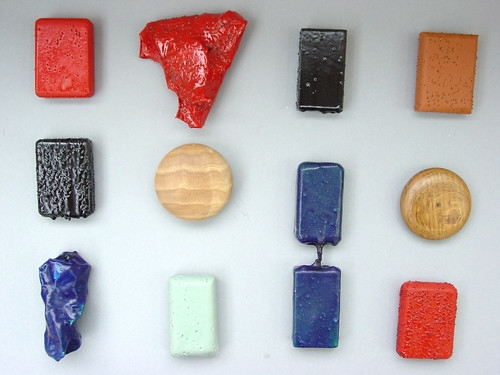
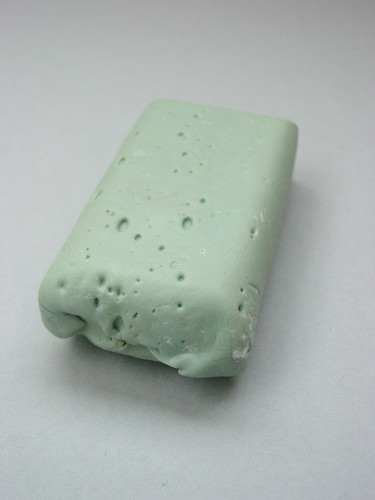
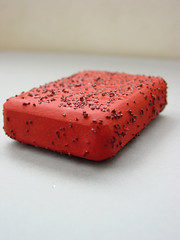
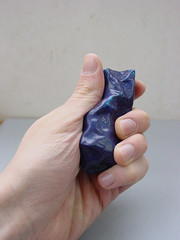
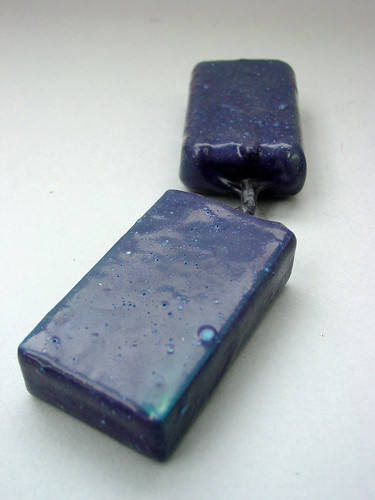
No Comments or Trackbacks